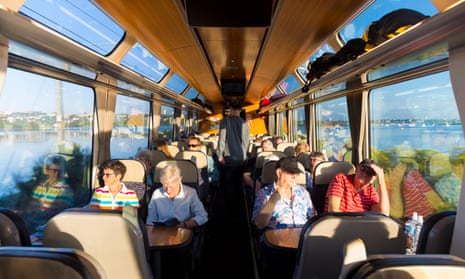For a people represented by a unique flightless bird, Kiwis do a lot of flying. While globally, aviation emissions represented just under 3% of carbon dioxide emissions in 2019, for New Zealand the figure was 12%. New Zealand ranks sixth in per capita aviation emissions, at one tonne of carbon dioxide per person, about 10 times the world average. It ranks fourth for per capita emissions in domestic aviation – just ahead of Canada, even though Canada is 40 times the size of New Zealand.
Perhaps this is not surprising. New Zealand is far away from most population centres. It has a large tourist industry and a population with globally dispersed families – 27% of the population was born overseas, and an estimated one million Kiwis live overseas.
But it is a problem, for there is no easy way to replace fossil fuels for long-haul flying. As John Vidal, the Guardian’s former environment editor, points out, the only real option in the short- to medium-term is less flying. Vidal mentions passenger rail as an alternative in the UK and Europe. But it is not an alternative in New Zealand, because we have dismantled our long-distance passenger rail network, a process that has now entered a critical and possibly terminal phase.
The national rail service operator, KiwiRail, announced in late 2021 that it was suspending the Northern Explorer train. This linked the largest city, Auckland, with the capital, Wellington, along a corridor containing 60% of New Zealand’s population. Also gone is the train linking the ferry port of Picton with the South Island’s largest city, Christchurch. Removing the Northern Explorer leaves New Zealand as the only advanced economy in the world without either a day or a night train linking its largest cities.
Now the only alternatives are driving, flying or catching a bus. But even though the latter is a low carbon form of travel, New Zealand stands out internationally for the poor quality of its long-distance coach services. While countries like the UK, Norway, the United States and Australia have long had buses with onboard toilets, New Zealand does not. Nor are there many good, accessible off-bus or roadside toilets. Weatherproof bus stops are few and far between.
The only political party that supports long-distance passenger rail is the Green party. But even they have been pretty much silent on the issue of train suspensions. A Rail Plan was released by the government in 2021, but it gives no support to long-distance passenger rail. The Climate Change Commission has been equally silent on the contribution that long-distance rail could make to decarbonise domestic travel.
It has primarily been non-governmental organisations and individuals that have argued for passenger rail. In 2017 the advocacy group Greater Auckland set out a plan for developing rapid rail within the golden triangle of Auckland, Hamilton and Tauranga. A Save our Trains campaign was launched in January 2022 to bring back long distance passenger rail. These campaigns recognise the benefits of rail in terms of lowering carbon emissions and connecting communities.
Meanwhile, the airline industry continues to promote growth. There are expansion plans for both Wellington and Auckland airports and a proposal, funded by ratepayer-owned Christchurch Airport, to build a large international airport in Otago. This also involves government funding.
So if the government sees the future of long-distance travel in New Zealand being almost solely dependent on planes, does it have a clear strategy for decarbonising domestic aviation? The draft Emissions Reduction Plan had few details, although it was acknowledged that for land transport, the Emissions Trading Scheme (which also covers domestic aviation) will be unable to deliver the complete transformation that is required.
Then, in November at Cop26 in Glasgow, New Zealand and 22 other nations joined the “International Aviation Climate Ambition Coalition”, committing, among other things, to “preparing up-to-date state action plans detailing ambitious and concrete national action to reduce aviation emissions”.
What would such a plan look like? In a new report, I look at all the options. Global interest in net zero aviation by 2050 is rising, and New Zealand needs a bold national plan to begin the rapid decarbonisation of regional travel. Given the significant challenges of reducing emissions from flying, that plan should include trains.
Robert McLachlan is a professor in applied mathematics at Massey University
